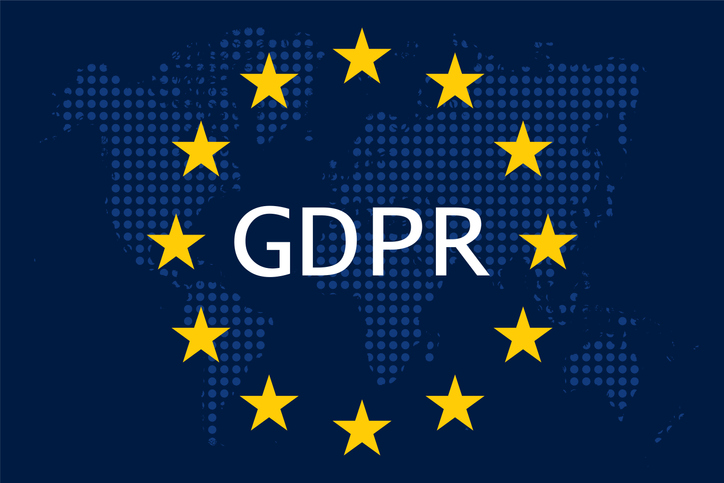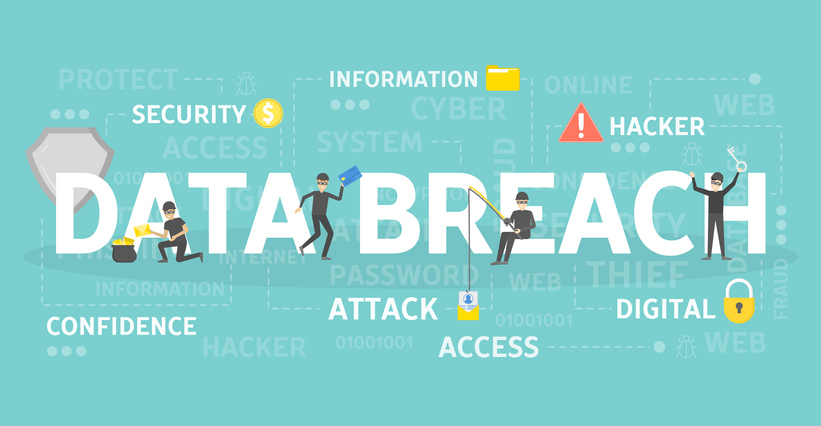
by Felicien | Mar 13, 2019 | Education
Are your company processes aligned with the technology you have? Have you purchased different software for different things when one software could have been used for multiple things? Do you feel there are technological gaps or challenges not being appropriately addressed? Is your company providing its services or products in the most optimal way? Do you want systems streamlined to meet company goals?
If you have any one of these questions or any others like them, then you may be in need of a vCIO. But is a vCIO just another expense for your company or is it essential to obtaining optimal performance and achieving goals? Here’s what you need to know and should consider.
What is a vCIO?
A vCIO, short for virtual Chief Information Officer, provides all the functions of a CIO that large firms employ to develop strategies designed to leverage technology for optimal business performance. The CIO looks to technology for solutions, aligns it with business needs and goals, and measures its success by establishing metrics. In addition, the CIO keeps informed of all new opportunities and technological developments to ensure the company is up-to-date and on course for success.
Thus, a CIO is vital to an organization’s development, growth, and continued success. The one difference between a CIO and a vCIO, however, is this: resources. A full-time CIO is expensive and requires a lot of resources. You have to provide an office, a workstation, a good salary, and benefits. Those are costs that medium to smaller sized organizations would like to avoid. A vCIO allows these companies to benefit from the skills and knowledge of a CIO without having to put forth the full expense of one. A vCIO can be retained on an as-needed basis, so you pay only for the times you benefit from his or her services. In sum, your smaller company outsources a vCIO and receives larger company executive-level expertise at an affordable basis.
What benefits can a vCIO bring to your company?
To know the benefits a vCIO would bring to your company, a good starting point is understanding better what a vCIO actually does.
A vCIO is equipped with pretty much the same duties and responsibilities that a CIO is, and these include:
Analyzing IT. A vCIO assesses the hardware and software you use as well as your overall IT infrastructure and aligns it with your business processes and business goals. This analysis allows the vCIO to understand your work processes as well as to identify any challenges, gaps, and tech solutions. Based on this analysis, a vCIO will recommend hardware, software, and IT infrastructure expenditures.
Strategizing. A vCIO’s primary goal is using technology strategically. The vCIO will develop a plan to create and manage an IT system that helps the company achieve goals. The vCIO has a deep knowledge of technology and business and is able to incorporate both to benefit companies. To incorporate the strategy, the vCIO will work with other stakeholders and direct the IT roadmap.
Adding Value. A vCIO makes sure that the technology used brings value to the company by helping employees do their jobs better and by providing services and information, among other things, to clients more efficiently. A vCIO makes sure employees and clients get what they need.
Providing information. They are not called chief information officers for no reason. vCIOs must stay current on all things related to technology, including things that pose as risks to the company, technologically speaking. The vCIO will know all the industry trends and will analyze what the future holds so that the company invests in the right technology now and does not lose out later because of it.
These are the broad responsibilities of a vCIO, and through these responsibilities — if executed well — the company benefits. By leveraging technology strategically and successfully, a vCIO helps the company increase its employee and customer/client satisfaction while also increasing revenue and decreasing expenses.
In this way, the ultimate benefit of a vCIO is this: competitive edge. A vCIO can be that competitive advantage your company has over the competition.
Does your company need a vCIO?
In today’s market, no matter what industry you are in, technology plays a role. And technology is changing and evolving all the time, and with the latter come new opportunities as well and new challenges. No company today should be without an information officer, but so many are, and that’s why so many companies fail to achieve their goals. An information officer brings together technology advancements with company goals, and through this strategic alignment, magic happens.
So the question should really be: do you need a full-time CIO or a vCIO? The answer is dependent on several factors.
Number of employees. How many employees does your company have? Generally speaking, a company employing 250 people or fewer may benefit from a vCIO, but larger companies typically require full-time CIOs.
Technology. How much is your company reliant on technology? What are your security needs? How many employees are dependent on technology for their day-to-day tasks? How is data stored and managed?
Company Growth. Do you intend to grow your company? If so, when and how?
Business Goals. What are your business goals? How do you intend to reach those goals?
Resources. What resources, especially in terms of financial resources, does your company have? A vCIO saves you money and helps you increase profits, but the initial costs must be considered.
There are no straightforward means to determine if your company needs a vCIO or not. You must consider the above factors and weigh your answers. Technology today is complex. Its application for strategic purposes is complex. Its benefits, however, are many. Can a vCIO take your company where you want it to go, and can it do so faster, more efficiently, and more effectively?
Is a vCIO essential to your company?
Now for the real question: is the vCIO essential to your business? The short answer: yes. But if you are still unsure, ask yourself these questions:
Does your company have a go-to IT person who knows all things technology?
Is the technology your company has being used fully and strategically?
Are you creating value through your technology?
Is your data safe and secure?
Are your employees satisfied?
Are your clients/customers satisfied?
Do you see growth in the future?
Do your IT infrastructure and your business procedures lead to outcomes that achieve business goals?
Do you have a competitive advantage over your competitors?
If you answered no to any of these questions, then that can be problematic. A vCIO can ensure that all the above questions are answered affirmatively, and when that’s the case, you can rest assured your company is performing optimally. So, ask yourself now: is a vCIO essential to your company? Then act; do your research and find a vCIO that will fit well with your company.

by Felicien | Mar 13, 2019 | Education
No matter how good technology gets, technical issues are still and will continue to be a major cause of lost productivity for individuals and companies. Problems with slow or crashed computers, loss of internet service, printers not working, dropped telephone calls, and other annoying little gremlins are costing companies millions of dollars a year, including yours. Whenever your tech isn’t working the way it should, you’re losing revenue and it quickly adds up.
A Sobering Statistic
To get an idea of just how costly all those little glitches are, consider the results of a recent survey by Robert Half Technology. The study found that, on average, workers spend about 22 minutes each day dealing with some type of IT issue. That adds up to an eye-opening 91 hours annually or two weeks of downtime for each employee in your organization.
So think about what that equals in loss of revenue. Some people generate more than others of course. But if you have a professional who’s billing by the hour, for example, or a salesperson who is bringing in say $10,000 per week, and they’re out of commission for two weeks each year, that soon starts to add up to some serious money.
IT issues will always be a fact of life for modern companies to one degree or the other but there is a proven way to keep them to a minimum and reduce their impact on your business operations. It all depends on how well your managed services provider, or your in-house team, addresses your needs and resources.
A Matter Of Strategy And Priorities
A good provider will devote time and resources to two key priorities:
Optimizing your technology resources, regularly monitoring and testing your system to make sure it’s functioning at its optimal performance, and preventing problems from occurring in the first place, not just reacting when an emergency happens.
Devising a strategy that implements the type of technology that will best serve your company’s unique and specific needs.
If you have systems and equipment in place that you don’t necessarily need, that’s a drain on your resources and budget and creates more complexity, and thus more opportunities for things to go wrong. If, on the other hand, you don’t have the capabilities you need, efficiency and productivity will be hampered.
An experienced and professional managed services provider will ensure that your organization has the right balance, providing you with the optimum in performance. They will also monitor your system in real time to spot potential problem areas, and to be able to react quickly when they do happen.
Your technology partner should be willing to work with you on a personal basis to devise a plan that will best fit your needs, and they should always be available. If you have a question or an issue, you don’t want to reach an answering machine or service.
It’s easy for a business to get used to minor tech issues and become complacent about them. But the fact is that they’re costing you more money than you know. Finding a good IT partner could be one of the best business decisions you’ll make.

by Felicien | Mar 12, 2019 | Education
Less than a year ago, the European Union instituted the General Data Protection Regulation (GDPR) to protect customer rights to data privacy.
The regulation created quite a stir in May 2018 when it was enacted, and has recently created even more of a stir because the first fines for non-compliance have been levied. While the EU granted a short amnesty period to allow organizations to comply with the regulation, the fines definitely send a clear signal that the amnesty period is indeed over.
Companies are responsible for implementing GDPR-compliant data policies; complacency about the regulation will surely not win the day. No excuses — comply or be fined; the EU has definitely made good on its promise to staunchly defend citizen rights to privacy.
Thus far, there have been three notable penalties. One of the most visible is, of course, Google, which received a €50 million fine in France, courtesy of French data regulator CNIL (Commission Nationale de L’informatique). Google’s fault according to CNIL is the lack of transparency and unclear consent regarding advertisements.
In particular, Google did not have one clear source of information regarding how data is collected. Instead, the information was interspersed into various documents and websites, creating a nearly impossible task for the end user to be aware of how their personal data is actually being used.
The bottom line is that users must be able to make an informed choice about whether (or not) to consent to Google’s use of their data. The other important factor in the Google fine is that CNIL clearly sent a signal that Google can and will be regulated by every data privacy authority (DPA) within the European Union regarding the GDPR rules. Companies that were just focusing on the data privacy rules in their own country have definitely taken notice.
Google will inevitably appeal CNIL’s decision and organizations around the world are anxiously awaiting said outcome. If CNIL’s decision stands firm, companies will have to make changes in how they conduct similar online platforms. Simply said, the outcome could possibly create a profound change in the relationship between consumer and advertiser.
In Germany, a similar social media platform was fined €20,000 for a breach that compromised personal information like passwords and email addresses from more than 300,000 users. While this fine could have been much worse for the company, many industry experts state that the company was given a much lower penalty for how they handled the breach. The company’s saving grace was a proactive notification of both customers and the German GDPR data protection authorities.
This last example of a GDPR-levied fine definitely brings home the message of the lengths the EU will go to protect their citizens. In this case, an Austrian businessman was fined for placing a camera outside his business. The camera was not clearly identified as a CCTV camera, yet it was recording a public space outside his business.
Since GDPR began, the EU has received nearly 100,000 data privacy complaints from its citizens and over 40,000 data breach notifications from companies. Experts say these numbers are low because they are based on voluntary contributions from only 21 of the 28 EU member countries. The numbers therefore are actually much higher.
So far, the GDPR has reported levying 91 fines, with 60 of those fines levied by the German DPA alone. GDPR definitely changes the compliance risk for organizations across the world. Heftier and more numerous fines are expected to be handed out in 2019 as the EU moves into GDPR with full steam.
The United States was once the trailblazer of the world when it enacted the mandatory data breach notification laws and punishment sanctions for non-compliant businesses. Now, the U.S. Congress is closely following GDPR and may soon enact similar privacy considerations to rein in companies like Google, Facebook and others who offer free products and services at the expense of a user’s personal information. Congress understands that what a consumer discloses today can have far-reaching implications years later, and they are definitely watching the implementation of GDPR as Europe nears its first anniversary of enacting the law.

by Felicien | Mar 12, 2019 | Education
When you think about it, it makes sense that hackers might target managed services providers (MSPs) — those organizations that are responsible for protecting the data and technology systems for hundreds or even thousands of other organizations. The Department of Homeland Security recently alerted MSPs to the potential activity from hostile actors who were targeting large organizations in a new way. These nation-state hackers were using managed service providers who provide outsourced website management and cloud functions to infiltrate a variety of companies. While any organization can potentially be vulnerable, MSPs often maintain an increased state of alert to ensure that any infiltrations are quickly discovered and remediated before the threat can expand.
How Cybercriminals Are Targeting Their Attacks
Managed service providers often maintain direct and unfettered access to client information, making them a key target for hackers. While perhaps not a daily occurrence, security breaches happen to organizations of all sizes — much more often than business leaders would like to admit. Attacks against a well-defended organization such as a managed services provider take an exceptional level of coordination, often perpetrated by high-powered, international hackers. These organizations often attempt to gain access to an MSP by using malware to steal administrative credentials before tunneling deeper into the infrastructure to gain access to additional machines and software. This business information is then packed out of the platforms, allowing hostile foreign actors to gain access to sensitive personal, financial and business information.
Are Managed Services Providers Safe?
Maintaining a secure infrastructure for your business is core for MSPs, as they have the dedicated and knowledgeable staff focused on protecting client and business information. While a compromise within a service provider can spread quickly if it is unnoticed, the active reporting and review by security professionals is likely to catch any infiltration before it becomes widespread. One of the key ways that managed services providers are being attacked is through APTs, or Advanced Persistent Threat malware. These sneaky programs are designed to gain deep access before they are noticed, but managed service providers have programs that trigger alerts for review by human security professionals to maintain a high level of security for your business at all times.
Maintaining adequate security measures as well as advanced backup and recovery mechanisms is one of the best ways to thwart these hackers before they are able to negatively impact your business or your customers. Local and cloud-based backup procedures, as well as proactive and quick recovery strategies, can mean the difference between losing access to your information for days or even weeks and being able to quickly restore full operations to your business.

by Felicien | Mar 11, 2019 | Education
Citrix said the FBI warned them on Wednesday, March 6th that hackers compromised its IT systems and stole “business documents.” Citrix doesn’t know precisely which documents the hackers obtained nor how they got in.
It’s suspected that this is a sophisticated cyber espionage campaign supported by a nation-state. The consequences of the Citrix security incident could affect a broader range of targets, as the company holds sensitive data for many companies, including critical infrastructures for governments and enterprises.
For more information click here. Feel free to contact us for assistance if you’re concerned about your IT security.




